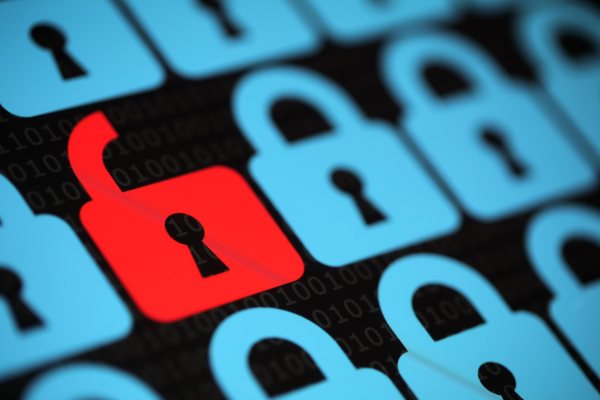Leading up to Chinese President Xi Jinping’s visit to the United States, media buzzed with talk of an unprecedented cybersecurity agreement on par with previous governance around the creation and handling of nuclear, chemical and biological weapons.
But what was built up to be the first arms control accord for cyberspace actually turned out to be quite anticlimactic.
The agreement as it stands stops short of putting an end to international cyberattacks, failing to address theft of corporate information for espionage and stealing of government records and other sensitive data not aimed at commercial gain. It also doesn’t even mention a safeguard against attacks targeting critical infrastructure. Instead, it focused on ending government support — particularly in China — of cyberattacks that aim to steal corporate data for economic benefit, paired with a plan to better cooperate for future investigation of cybercrimes in both nations.
Even ignoring the exceedingly narrow realm of information protected, the pact is mired in a grey area. It’s been noted that President Obama claims the agreement is a work in progress, in which case it is left to be seen whether China will follow through. President Xi has taken a self-preservatory stance with a caveat to his own promise of full cooperation: That he can’t be expected to guarantee the Chinese population of 1.3 billion people will abide. The impact of the pact is nullified by this reluctance to enforce strong parameters.
What do we get? An “agreement.” It’s weak at best, considering it contains no international standards of conduct in cyberspace. It’s the Wild West of technology, and the only thing we can rely upon to keep both nations honest is someone’s word. Given that China has been accused of executing the OPM breach and implicated by the likes of my former colleague, NSA Director Adm. Michael Rogers for supporting cyber attacks against the U.S. (despite constant denial), it’s hard for the Obama administration to trust that Xi and his own government will fully cooperate.
A Step In The Right Direction
That said, even through the easy criticisms of a weak agreement, there’s no denying it is a step in the right direction. An international framework to guide cyber capabilities does need to be established, and this pact — narrow as it may be — is a start, and an important one.
Nation leaders need to focus on scaling back the infiltration of each other’s technological infrastructure.
But there are two faces to this coin. Because the world lacks an existing policy framework on this topic, failing to follow through on the U.S.-China agreement could be the first step in history toward an inevitable world cyberwar. Many reports have already branded our current era as the new Cold War, drawing similarities between developing cyberweapons and the nuclear arms race of a few decades ago.
One distinction, however, ups the ante: Access to cyberweapons is far more widespread, and phishing schemes that pilfer legitimate user credentials don’t even require malicious code. Moreover, advanced threats are nearly impossible to trace, and the Dark Web makes it easy to purchase malicious code without the threat of being identified.
As U.S. Naval War College professor Michael Schmitt put it in a recent WSJ article, “It’s not like developing an air force. You don’t need to have your own cyberforce to have a very robust and very scary offensive capability.” In short, there is no enforceable way to control the production of cyber capabilities, and, once executed, attribution is nearly impossible.
Impending Cyberwar Or Cooperation?
Today, we have two paths in front of us. One leads to disaster and cyberwar, the other to strong cooperation and a secure cyberspace. To avoid the former, we need to establish laws and policies that would elevate and protect the cyber capabilities of participating nation-states while also allowing them to defend their own networks and infrastructure from outside threats. Models are already at play from the nuclear Non-Proliferation Treaty to the Chemicals Weapons Convention. It’s time to learn from those agreements and carry the knowledge over into the cyber realm.
This won’t be easy. It will prove challenging to make an enforceable regulatory crossover to the abstract and behavior-driven nature of cybersecurity. Tangible weapons require a lot of steps before production, which can be monitored and controlled. In contrast, with cyberweapons, all it takes is a computer and a few lines of code — and sometimes no code at all. Not to mention that trying to manage the individuals behind development of cyberweapons may turn out to be impossible.
History has shown that peace is possible.
The solution could lie in initiating a framework that would govern behavioral norms for software and hardware development, rooted in national and international policies and regulations. But there’s a fine line. Regulations should aim to protect but never handicap research and well-meaning development in the cybersecurity space. We cannot confuse policy and regulation for censorship, as the recently proposed changes to the Wassenaar Arrangement almost did.
However great the struggle to finding an even playing field for cyber regulations may be, it should not be a deterrent to making the necessary effort. We’ve recently begun seeing repercussions of the alternative, in the forms of government and industrial breaches. Perhaps the answer is not in regulation but in scaling back offensive cybersecurity technology, similar to what we have done with nuclear weapons in the past.
Cyber-competent countries like the United States, Russia and China all have covert capabilities and latent cyber tools lying in wait for the moment cyberwar becomes a reality. Instead of focusing on the commercial impact of cyberweapons, nation leaders need to focus on scaling back the infiltration of each other’s technological infrastructure. History has shown that peace is possible — it’s time we truly embody cooperation and take tangible steps to do the same again.
